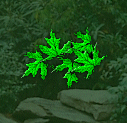
|
|
Water Conservation and Lawn Maintenance
The moderate drought of summer 2012 has left many lawns brown, dormant and unsightly. Water restrictions in some communities has also limited the landscapers' ability to maintain appealing, green turf areas. Turfgrasses are not inherently water wasteful, improper lawn maintenance leads to inefficient water consumption. An enduring misconception that turf areas use more water than other landscape plantings is not based in fact. Trees and shrubs actually consume more water than turf. The notion that native plants use less water than turf does not always hold true either. Many turfgrass varieties have been developed that are drought resistant and have low water usage rates. See the website of the National Turfgrass Evaluation Program (www.ntep.org) for information on turfgrass with superior drought resistance.
Water conversation and improved lawn quality can be achieved by cultural practices that encourage deep rooting, prevent run-off, and eliminate irrigation inefficiency.
- Maintain a height of cut appropriate for the turfgrass species. Higher mowing heights promote deep rooting which improves access to available soil water.
- Follow the one-third rule, mowing regularly and frequently to reduce leaf area and water loss by evaporation and transpiration (ET).
- Maintain sharp blades as dull blades shred turfgrass creating wounds that lose water (and provide infection courts for pathogens).
- Avoid excess nitrogen fertilization which promotes leaf area and ET while decreasing root growth. Nitrogen should be applied at minimal levels needed and timed to meet specific turfgrass requirements.
- Potassium, as well as nitrogen, is required by turfgrass and proper levels improve the plants' draught tolerance. Soils should be tested regularly to determine potassium levels and potassium applied according to the soil test results.
- Know the soil type of the turfgrass area as different soil types have different water holding characteristics. Sandy soils hold less water than loam or clay soils and therefore need more frequent watering. Compacted soils and soils with high clary content have low water infiltration rates which contribute to run-off. Short, repeated irrigation cycles may be required to achieve the necessary one inch/week of water in the root zone.
- Select turfgrasses that have low water requirements. Turfgrass cultivars with characteristics such as low leaf area, slow growth rate, narrow blades, high leaf and shoot densities, or horizontal leaf oritentation use less water which maintaining acceptable quality.
- Eliminate poor cultural conditions that contribute to root related stress such as soil compaction, excess thatch (>0.3 in), low pH (<5.5), overwatering, excess nitrogen, extremely close mowing, and high soil temperates. Compaction and excess thatch also increase run-off contributing to inefficient water usage and pollution of surface waters.
- Control weeds that compete with the turf for limited water supplies.
- Water deeply and infrequently to ensure that the soil is wet throughout the root zone. An established lawn needs one inch of water per week. Allow signs of mild drought stress (foot printing, leaf rolling) between irrigation events to promote drought resistance and deep rooting. Overwatering results in decreased rooting depth, decreased drought resistance, soil compaction and favors disease causing organisms.
- Planning irrigation based on water loss from ET prevents overwatering, water loss to leaching and shallow rooting. Installing rain sensors on automatic irrigation systems prevents unnecessary water use. Automatic irrigation systems can be fitted with ET based controllers and/or rain sensing override devices.
|
|
Tree Services
Rudy's Tree offers tree pruning.
Design/Construction
Rudy's Tree offers several different design/construction options ranging from walks, walls, patios and planting.
Maintenance
Is your lawn or yard starting to look its age? Rudy's Tree offers regular maintenance programs including lawncare and ornamental pruning.
|
|
|



